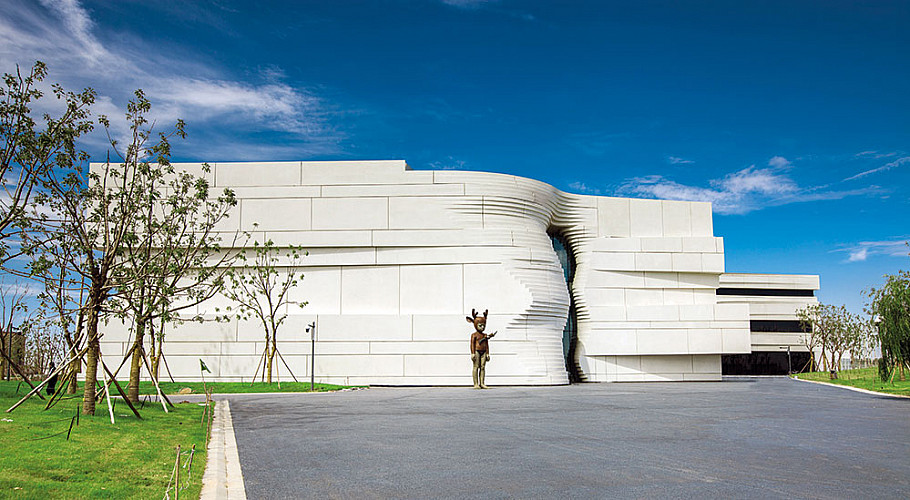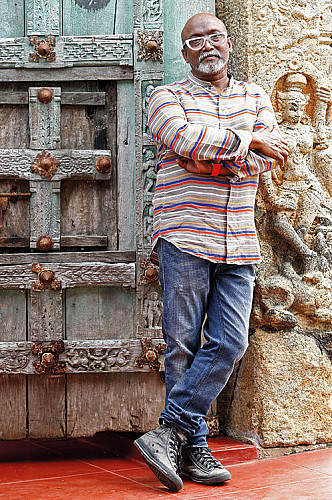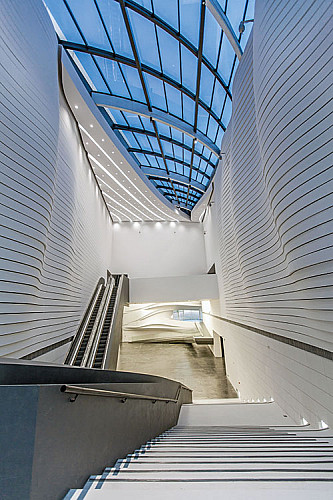- Home
- Arts & Culture
- Framed
- Bose Krishnamachari On The First Edition Of Yinchuan Biennale
Bose Krishnamachari On The First Edition Of Yinchuan Biennale
He talks about his role and inspirations for the event….

Tell us about the location of the biennale.
Yinchuan MOCA (Museum of Contemporary Art) is a new space and the only contemporary art museum in Yinchuan, the capital of the Ningxia Hui Autonomous Region of China. Art institutions there are under-supported, like most of our state colleges in India. Yinchuan MOCA is located in an isolated place; it’s almost like a huge UFO that’s landed from a distant planet on this desert landscape.
What can viewers look forward to?
The first edition will witness 74 international artists, representing all facets of the global spectrum and from all parts, working on contemporary issues that the world has to contend with. The Yinchuan Biennale thus proposes to create a discourse on all the conflicts that the world is currently confronted with, and perhaps make possible propositions through a global creative confluence. I thought it was extremely important to showcase new faces in the art world, the youngest artist for example is Alaa AlQedra who I found at Sharjah Art College, and there’s also Sushanta Kumar Maharana who works from a modest workshop and living space in Kolkata. At the same time, it was important to show the work of senior artists such as Yoko Ono whose work I saw in Beijing, Ai Weiwei through conversations with his studio, and Mary Ellen Carroll who will work site-specifically in Yinchuan.
Have you made a conscious effort to focus on local Chinese art?
I have walked around and read extensively about the local history and culture, universities and society. I won’t claim that I know them well but what is more exciting for me is the opportunity to take chances and to explore the unknown. Biennales should be an educational opportunity for local kids and curious social readers. Yinchuan has incredible potential for growing as a cultural and artistic location. The Yinchuan MOCA has built 24 art residencies recently and six biennale artists will be the first to experience and explore the possibilities to create new portraits for the event. However, you won’t see Chinese ink paintings and wash drawings but you can definitely experience contemporary visual aesthetics and cutting-edge practices from 33 countries.
How do you select the projects that you work on?
If I knew everything about an exhibition before starting it, there would be little point in beginning a conversation. In my case, so far, chance and happy accidents lead to a sudden vision! A good curator is like an art evangelist, a missionary for a better world — he or she celebrates the aesthetics of life, and keeps walking and working towards these goals. Location also plays an important role. If there is a possibility to experiment at the allotted space, if I can bring excitement to a region, then I take up the project. I definitely wish to have passionate organisers and a dedicated team; a chance of inventing with the patrons; and open-minded political decision makers. I also give invited artists creative freedom.

How has your experience at the Kochi-Muziris Biennale shaped your outlook?
You can organise festivals and weddings on a big scale but a biennale, like Kochi-Muziris, is impossible to imitate. Kochi and its location cultivate a pride that cannot be replicated; you can be part of it and join in to inhale new aromas of culture. Making it sustainable is another Herculean task; you need to have a team of passionate people and energies. Yes, Yinchuan, Lahore, Srinagar and Pune biennales are all inspired by Kochi, but we won’t be able to predict their destinies just yet.
India used to have a triennale, in fact the first one in the world. It was started as part of a nation-building exercise, during the time of Jawaharlal Nehru, and brilliant minds like Dr Mulk Raj Anand, Octavio Paz and others were involved. Look at the project now — bureaucrats and mediocrity have killed their vision of art infrastructure for a better India!
The Yinchuan Biennale will continue till December 18, 2016.
Verve Trending
Sorry. No data so far.
us on Facebook to stay updated with the latest trends






